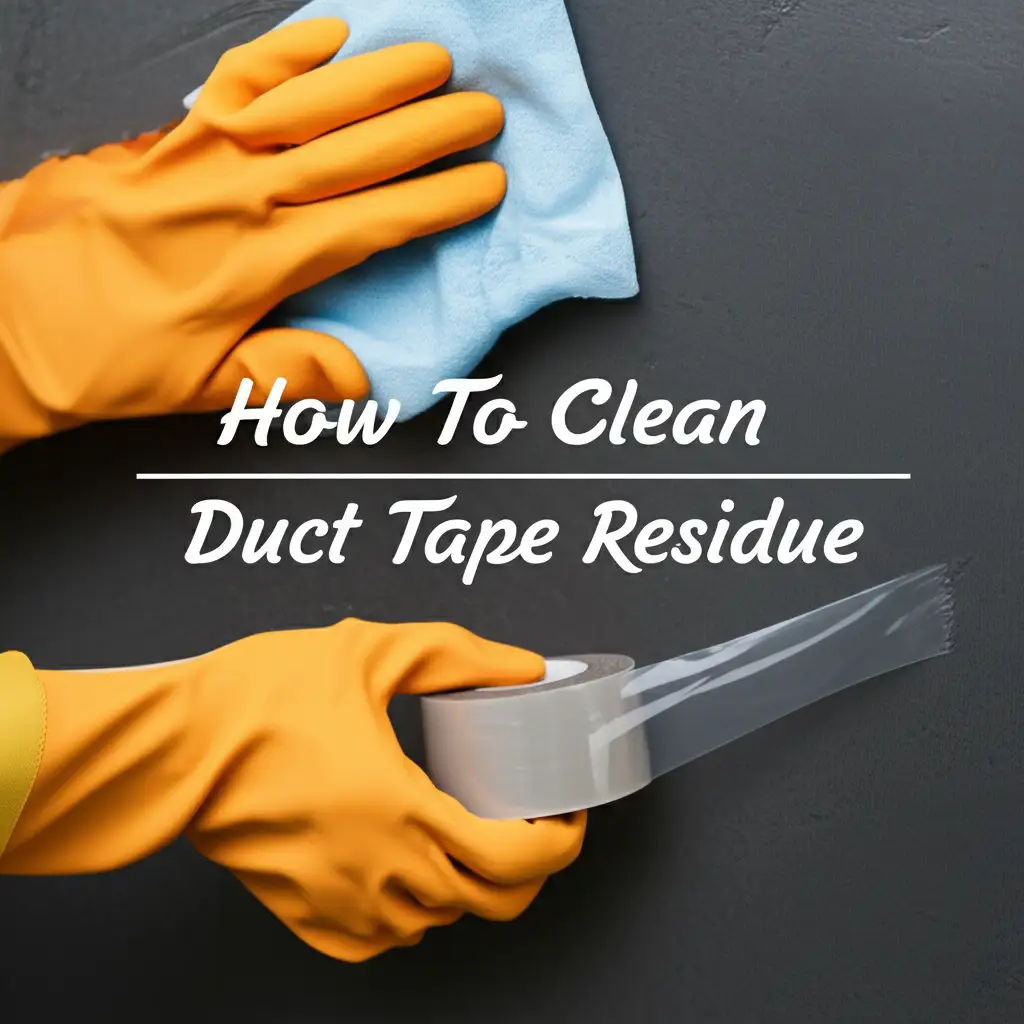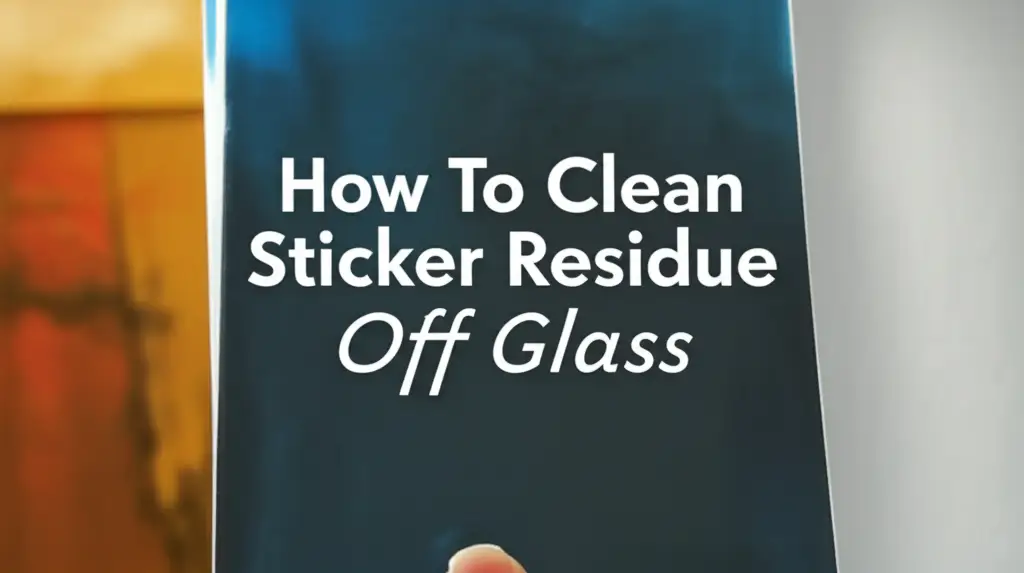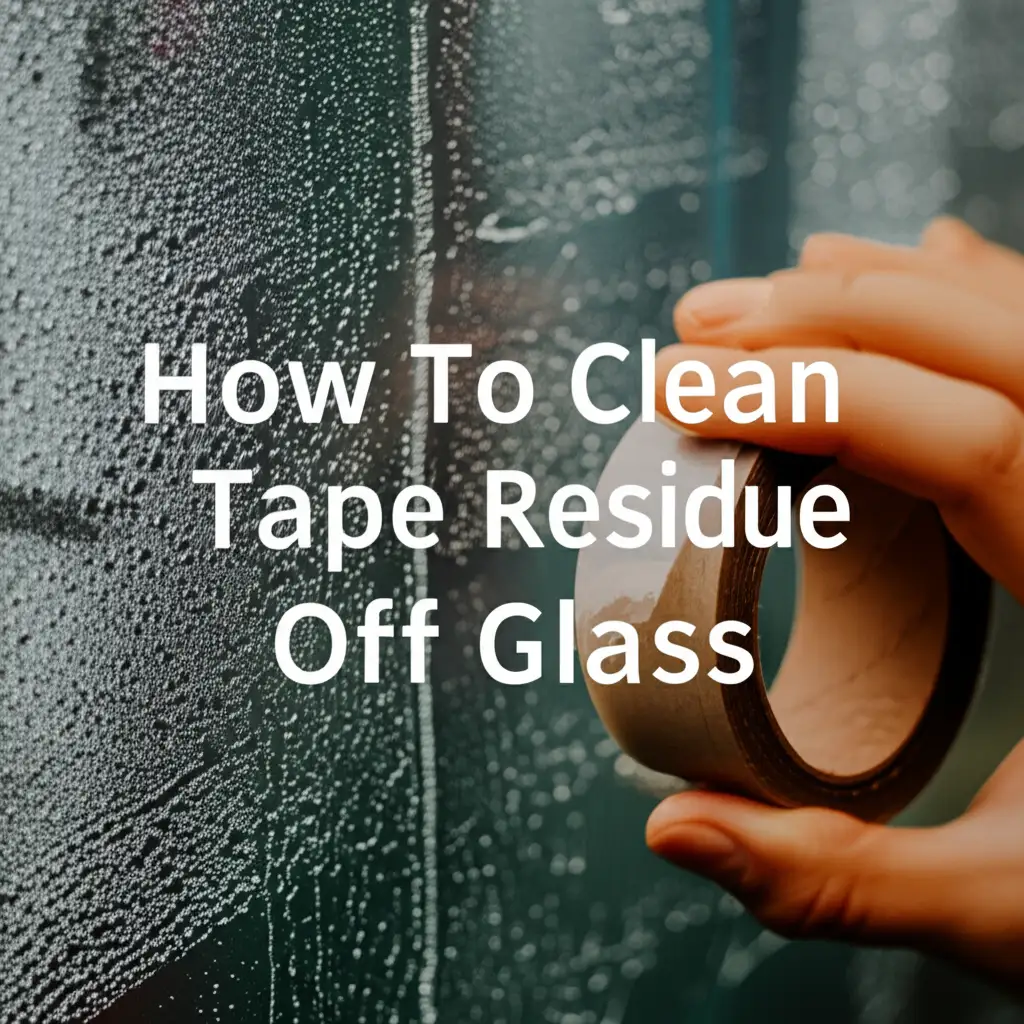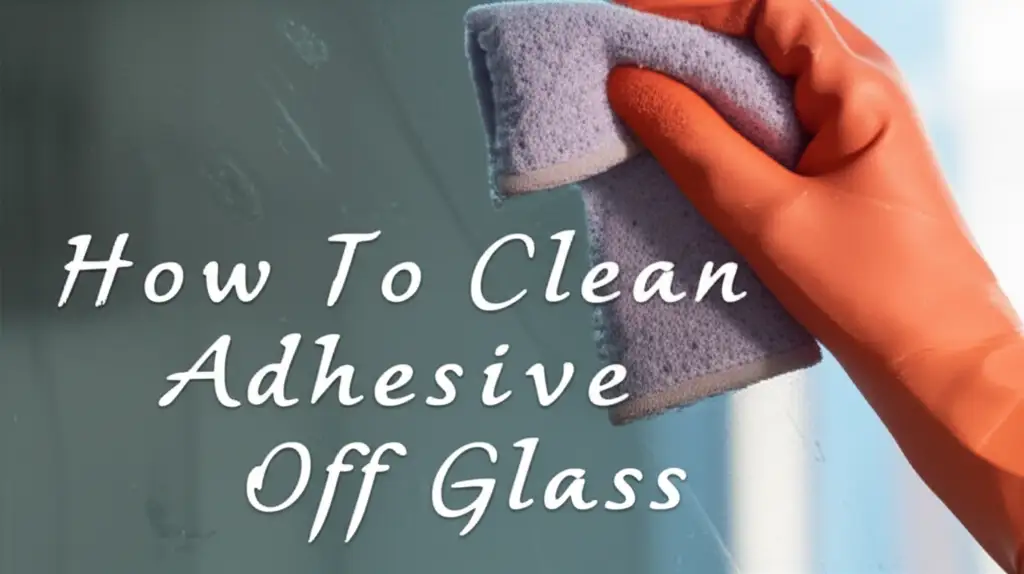· Home Cleaning · 17 min read
How To Clean Duct Tape Residue

A Simple Guide to Cleaning Duct Tape Residue
Duct tape is a household hero. It fixes many things. It holds items together firmly. But when you pull it off, it often leaves a sticky mess. That gummy, unsightly strip is duct tape residue. Cleaning duct tape residue can seem like a tough job. It clings tightly to surfaces. You might feel frustrated by it. This guide helps you tackle this common problem. We cover the best methods. We show you how to remove this sticky mess from different materials. You will learn about safe and effective solutions. Let us make your surfaces clean again.
Takeaway:
- Identify the surface material before cleaning.
- Use a scraping tool first for thick residue.
- Choose the right cleaning agent for the surface type.
- Always test cleaners in a hidden spot.
- Wipe away residue promptly and thoroughly.
To effectively clean duct tape residue, apply a suitable solvent like rubbing alcohol, Goo Gone, or an oil-based product (e.g., olive oil) to soften the adhesive, then gently scrape or wipe it away, ensuring you match the cleaning agent to the surface material for best results.
Understanding Duct Tape’s Stubborn Grip
Duct tape is famous for its strength. It sticks to almost anything. Its strong adhesive makes it useful. This same strong adhesive makes it hard to remove cleanly. The sticky part of duct tape is a pressure-sensitive adhesive. This means it forms a bond when pressed onto a surface. It fills in small gaps on the material. This creates a very strong grip. When you pull the tape, parts of this adhesive can stay behind.
The Science Behind Adhesive Bonds
Adhesives work by forming chemical bonds. They also create physical interlocking with a surface. Duct tape adhesive is often rubber-based or acrylic-based. Rubber adhesives are very flexible and strong. Acrylic adhesives offer good resistance to heat and light. Over time, or when exposed to heat, these adhesives can degrade. They leave a hardened, sticky film. This film is the duct tape residue we want to clean. Understanding this bond helps us choose the right cleaner. You need something that breaks down this specific type of glue.
Common Surfaces Affected by Duct Tape
Duct tape sticks to many surfaces. It is used on glass, plastic, metal, and wood. You might find it on painted walls or even fabrics. Each surface reacts differently to adhesive. Some surfaces are porous. They absorb the sticky residue more deeply. Other surfaces are non-porous. These surfaces hold the residue on top. Glass and metal are examples of non-porous surfaces. Wood and painted walls are more porous. This difference matters for cleaning. The cleaner must be safe for the specific material.
Essential Tools and Supplies for Residue Removal
Before you start cleaning duct tape residue, gather your supplies. Having the right tools makes the job easier. It also helps you avoid damage. You need items to apply cleaners. You also need things to gently scrape. Protection for your hands is also important. Always protect your skin from cleaning agents.
Household Items You Already Have
You might not need special products. Many common household items work well. These items often break down adhesives naturally. I often start with these simple solutions. They are usually safe for many surfaces.
- Rubbing Alcohol: This is a powerful solvent. It dissolves many glues. It evaporates quickly.
- White Vinegar: Vinegar is acidic. It can soften some adhesives. It is also a natural cleaner.
- Cooking Oils: Olive oil, vegetable oil, or peanut butter work. The oil breaks down the sticky bond.
- Mayonnaise: This contains oil and mild acids. It can also help loosen residue.
- Baking Soda: Mix it with water or oil to make a paste. This adds gentle abrasion.
- Dish Soap: Use it with warm water. It helps lift and emulsify the residue.
- Pencil Eraser: A clean rubber eraser can rub away small spots.
- Hair Dryer: Gentle heat can soften old, hard residue.
- Soft Cloths or Paper Towels: For applying cleaners and wiping.
- Plastic Scraper: A credit card or plastic putty knife. It scrapes without scratching.
Specialized Cleaning Solutions
Sometimes, household items are not enough. Tougher duct tape residue needs stronger help. There are products made specifically for adhesive removal. These products are very effective. They are designed to break down strong glues.
- Goo Gone: This is a popular citrus-based cleaner. It works well on many sticky messes. It has a pleasant smell.
- WD-40: This multi-purpose spray can loosen adhesive. It works by lubricating the residue.
- Adhesive Removers: Brands like 3M or Krud Kutter make strong removers. Always check product labels for safety.
- Acetone (Nail Polish Remover): Use this with extreme caution. It is very strong. It can damage many surfaces. I reserve this for tough jobs on specific materials like glass.
Always read instructions on specialized cleaners. They often have specific application methods. They may also have warnings. Using the right tool and cleaner protects your surface. It also makes your cleaning job much easier.
Step-by-Step Methods for Different Surfaces
Cleaning duct tape residue requires care. Different surfaces react differently to cleaners. What works for glass might damage wood. Always test your chosen method. Pick a small, hidden area first. This step prevents damage to your item. I always do this before starting. It gives me peace of mind.
Cleaning Duct Tape Residue from Glass
Glass is durable but can scratch. It is a non-porous surface. This makes residue removal often easier.
- Scrape Gently: Use a plastic scraper or an old credit card. Carefully remove as much loose residue as possible. A razor blade can work for very tough spots. Use it at a shallow angle. Be very careful not to scratch the glass.
- Apply a Solvent: Soak a cloth with rubbing alcohol or Goo Gone. You can also use how to clean off sticker residue methods here. Press it onto the residue. Let it sit for a few minutes. This softens the adhesive.
- Wipe and Scrub: Gently rub the softened residue. Use a clean cloth or a non-scratch pad. For tough spots, repeat solvent application.
- Clean the Surface: Wipe the area with a glass cleaner. You can also use warm, soapy water. A mix of water and how to clean glass with vinegar is also effective. This removes any film.
- Dry: Dry the glass with a clean, lint-free cloth. This prevents streaks.
- Related: For more specific glass cleaning tips, see how to clean tape residue off glass and how to clean sticker residue off glass.
Removing Residue from Plastic and Metal
Plastic and metal are common surfaces. They can also get sticky with duct tape residue. Plastic can be sensitive to strong solvents. Metal is more forgiving.
- Initial Removal: Scrape off any thick, gummy residue with a plastic scraper. Be gentle on plastic.
- Choose Your Cleaner:
- For Plastic: Rubbing alcohol works well for most plastics. Test first. Goo Gone is another safe option. Avoid acetone on plastic. It can melt or cloud it.
- For Metal: Rubbing alcohol, Goo Gone, or WD-40 are all good choices. These are generally safe for metal.
- Apply and Wait: Apply the chosen cleaner to a cloth. Dab it onto the residue. Let it sit for 1-5 minutes. This allows it to penetrate the sticky layer.
- Rub Away: Gently rub the area. The residue should start to lift. Use a fresh part of the cloth.
- Rinse and Dry: Wipe the area with a damp cloth to remove cleaner residue. Then dry completely. This prevents water spots on metal.
Tackling Sticky Marks on Wood Finishes
Wood surfaces require extra care. They can stain or warp. The finish can also be damaged by harsh chemicals. I always proceed with caution on wood.
- Test First: Always test your chosen cleaner in an inconspicuous spot. This is vital for wood.
- Start Mild: Begin with cooking oil (olive oil or vegetable oil). Apply a small amount to a soft cloth. Gently rub the residue. The oil helps dissolve the adhesive.
- Use Peanut Butter: For stubborn spots, a small dab of peanut butter can work. The oils in it break down the glue. Let it sit for a few minutes.
- Gentle Scrape: If needed, use your fingernail or a plastic scraper. Be very careful not to scratch the wood finish.
- Wipe Clean: Wipe away the residue and oil with a clean cloth. You can use a bit of dish soap on a damp cloth to remove oiliness.
- Buff Dry: Dry the wood completely. You may want to apply a wood polish. This restores shine and protects the finish.
Dealing with Residue on Fabrics and Carpets
Duct tape on fabric or carpet is tricky. The adhesive can sink into the fibers. This makes it harder to remove. You need to be patient.
- Freeze It: Place an ice cube directly on the residue. Let it sit until the residue freezes and hardens. This makes it brittle.
- Scrape/Pick: Carefully scrape off the hardened residue. Use a dull knife or your fingernail. For carpets, you can gently pick at it.
- Apply Solvent (Test First): For remaining sticky bits, test a small amount of rubbing alcohol or Goo Gone. Apply it to an old cloth. Blot the stained area. Do not rub vigorously. This can spread the stain or damage fibers.
- Blot and Repeat: Continue blotting the residue. Use a clean part of the cloth each time. Repeat the application as needed.
- Wash Fabric: For removable fabrics, wash according to care instructions. For carpets, blot with warm, soapy water. Then blot with clean water.
- Air Dry: Allow the fabric or carpet to air dry completely.
Safe Removal from Painted Walls
Painted walls are delicate. Strong chemicals can strip paint. They can also leave discoloration. Always choose the gentlest method first. I have learned this the hard way.
- Gentle Heat: Use a hair dryer on a low setting. Warm the residue for 10-20 seconds. This softens the glue.
- Peel or Scrape: Try to gently peel off any softened tape or residue. Use your fingernail or a plastic scraper. Be extremely careful not to pull off paint.
- Oil or Vinegar: Apply a small amount of cooking oil or white vinegar to a soft cloth. Gently dab the residue. Let it sit for a moment.
- Blot and Wipe: Gently blot the residue. Then wipe it away with a clean, damp cloth. Repeat as necessary.
- Avoid Harsh Chemicals: Do not use rubbing alcohol or Goo Gone unless you have tested it. Even then, use sparingly. Acetone is a definite no-go for painted walls.
- Clean the Area: Wipe the area with a damp cloth. You can use a mix of water and how to clean walls with vinegar for a gentle clean. If residue leaves a mark, see how to clean stains off walls for further advice.
Gentle Methods for Electronics
Electronics surfaces like laptop screens or plastic casings need extra care. They scratch easily. Harsh chemicals can damage screens or finishes.
- Power Off: Always turn off and unplug the electronic device.
- Gentle Scrape: Use your fingernail or a soft plastic card. Gently scrape away loose residue. Do not press hard.
- Microfiber Cloth: Use a clean, soft microfiber cloth.
- Isopropyl Alcohol: Dampen the microfiber cloth with a small amount of isopropyl alcohol (rubbing alcohol). Ensure it is 70% or higher. Do not spray directly on the device.
- Wipe Gently: Gently wipe the sticky residue. Use light pressure. Do not rub vigorously.
- Dry: Let the area air dry completely before turning the device back on.
- For more specific guidance, explore methods for how to clean sticker residue off laptop.
Natural and Household Remedies for Sticky Residue
I always prefer natural solutions when possible. They are often safer. They also use items I already have. Many everyday items can effectively break down duct tape residue. They offer great alternatives to harsh chemicals.
Vinegar Power for Adhesive Removal
White vinegar is a cleaning powerhouse. Its acidity helps break down many types of adhesives. It is safe for many surfaces. It also acts as a disinfectant. I use it often around my home.
- Application: Soak a clean cloth or paper towel in white vinegar.
- Soak Time: Lay the vinegar-soaked cloth over the duct tape residue. Let it sit for 5-15 minutes. This gives the vinegar time to work.
- Scrape and Wipe: Use a plastic scraper or a dull knife. Gently scrape the softened residue. Then wipe away with the same vinegar cloth.
- Rinse: Wipe the area with a clean, damp cloth. This removes any vinegar smell.
- Dry: Dry the surface completely. Vinegar works well on glass, plastic, and some metals. Always test on painted or delicate surfaces first.
Oil-Based Solutions: Olive Oil, Peanut Butter
Oil is a simple yet effective residue remover. The oil acts as a lubricant. It helps separate the adhesive from the surface. It also dissolves the sticky bond. I find this method very satisfying to watch.
- Choose Your Oil: Olive oil, vegetable oil, canola oil, or even peanut butter work. Peanut butter’s texture helps it cling to the residue.
- Apply Generously: Apply a small amount of oil directly onto the duct tape residue. For peanut butter, spread a thin layer.
- Let It Sit: Allow the oil or peanut butter to sit for several minutes. Give it time to penetrate the adhesive. For tough spots, let it sit longer, even an hour.
- Rub and Wipe: Use a clean cloth or paper towel. Rub the residue in small circles. The residue will start to clump up.
- Remove Oiliness: Wipe away all residue and excess oil. Use a clean cloth dampened with warm, soapy water. This removes the oily film.
- Dry: Dry the surface thoroughly. This method is excellent for wood, plastic, and painted surfaces.
Rubbing Alcohol and Goo Gone Alternatives
Rubbing alcohol is a strong solvent. It dissolves many adhesives quickly. It evaporates without leaving much residue. Goo Gone is a commercial product. It uses citrus oils to break down sticky substances. These are both very effective. They are go-to solutions for tough jobs.
- Rubbing Alcohol:
- Dampen a clean cloth with rubbing alcohol.
- Blot or gently rub the duct tape residue. The adhesive should dissolve quickly.
- Wipe with a clean, damp cloth.
- Dry the surface. This is great for glass, metal, and some plastics. Test on colored or sensitive plastics.
- Goo Gone:
- Apply Goo Gone directly to the residue. Follow package instructions.
- Let it sit for a few minutes.
- Use a clean cloth to wipe away the residue.
- Clean the area with soap and water to remove the oily film.
- Dry completely. Goo Gone is versatile. It works on many surfaces. However, always test it first.
- For general sticky residue, including duct tape, consider methods described in how to clean off sticker residue.
These natural and commercial options provide powerful ways to clean duct tape residue. Remember to always choose the right method for your specific surface. Test it first. This ensures safety and effectiveness.
Safety Precautions and Best Practices
Cleaning can involve chemicals and tools. Safety is always important. Following simple rules keeps you safe. It also protects your surfaces. I always keep these tips in mind when I start a cleaning task.
Always Test a Small Area First
This is the most important rule. Different surfaces react differently. A cleaner that is fine for glass might strip paint. It could discolor wood.
- Find an Hidden Spot: Choose an inconspicuous area. This could be the back of a piece of furniture. It could be a corner of a wall.
- Apply a Small Amount: Dab a tiny bit of your chosen cleaner onto the spot.
- Wait and Observe: Let it sit for a few minutes. Check for any discoloration. Look for damage.
- Proceed if Safe: If there is no negative reaction, you can safely use the cleaner.
This simple step saves you from costly mistakes.
Proper Ventilation is Key
Many cleaning products release fumes. These fumes can be harmful to breathe. Good airflow helps disperse them.
- Open Windows: Before you start, open windows. Turn on fans.
- Work in Well-Ventilated Areas: Avoid cleaning in closed rooms.
- Take Breaks: If odors are strong, step outside for fresh air.
Your lungs will thank you.
Protecting Your Skin
Cleaning agents can irritate skin. They can cause dryness or rashes. Some can even burn.
- Wear Gloves: Use rubber or nitrile gloves. This protects your hands.
- Avoid Contact: Try not to touch the cleaners directly.
- Wash Hands: If skin contact occurs, wash thoroughly with soap and water.
Protecting yourself is just as important as protecting your surfaces. Always read product labels. Pay attention to safety warnings. Keep all cleaners out of reach of children and pets. When in doubt, choose the gentlest method. You can always try stronger options later if needed.
Preventing Future Duct Tape Residue
The best way to deal with duct tape residue is to avoid it. Knowing how to prevent sticky messes saves you time and effort. I find proactive measures are always better.
Choose the Right Tape for the Job
Not all tapes are equal. Duct tape is strong. It is meant for heavy-duty repairs. It leaves sticky residue because of its aggressive adhesive.
- For Temporary Holding: Use painter’s tape. It has a low-tack adhesive. It comes off cleanly. It is designed for temporary tasks.
- For Delicate Surfaces: Use masking tape or specialized low-residue tapes. These are gentler. They are less likely to leave a mess.
- For Permanent Fixes: Use strong adhesives or mounting tape if you want something to stay forever. But know that removal will be difficult.
Reading tape labels helps. Choose tapes that state “clean removal” or “low residue.” This prevents future headaches.
Remove Tape Promptly
The longer tape stays on a surface, the harder it is to remove. The adhesive bonds more strongly over time. Heat and sunlight can also make it bake onto the surface.
- Remove When No Longer Needed: Take tape off as soon as its job is done. Do not leave it on for weeks.
- Avoid Direct Sunlight: If possible, do not apply tape to areas exposed to direct sun. The heat can make the adhesive harder to remove.
Timely removal often means no residue at all.
Use Alternatives to Duct Tape
Sometimes, you do not need tape at all. Other fasteners or methods can work better. They leave no sticky mess.
- Clamps: For holding items together during gluing or drying.
- Rope or Bungee Cords: For securing items temporarily.
- Plastic Wrap: For protecting surfaces or holding light items.
- Velcro Strips: For reusable, temporary attachments. They leave no residue when removed.
- Glue Dots or Museum Putty: For light, temporary attachments on delicate items. These are often residue-free.
By choosing the right tools and materials, you can significantly reduce the amount of duct tape residue you face. This makes your cleaning life much simpler.
Frequently Asked Questions
Is WD-40 safe for all surfaces when removing residue?
WD-40 is generally safe for many surfaces like metal, glass, and hard plastics. However, it can potentially stain porous materials like unfinished wood or fabrics. It might also damage some delicate plastics. Always test WD-40 in a hidden area first to ensure it does not cause discoloration or damage.
Can I use a heat gun to remove old, dried duct tape residue?
A heat gun can soften old, dried duct tape residue, making it easier to scrape off. Use it on a low setting and keep it moving. Be careful not to overheat the surface. Excessive heat can damage paint, warp plastics, or crack glass. A hair dryer is a safer, gentler alternative for most home use.
What about old, dried residue that won’t budge?
For old, dried residue, you might need stronger measures. Start by warming it gently with a hairdryer. Then, try soaking it with a commercial adhesive remover like Goo Gone or a strong solvent like rubbing alcohol. Allow it to penetrate for a longer time. Gentle scraping with a plastic tool can help loosen it. Patience is key for stubborn spots.
Does vinegar work on all types of adhesive?
White vinegar is effective on many common adhesives, especially those that are water-soluble or easily broken down by mild acids. It works well on fresh duct tape residue. However, it might not be strong enough for very old, hardened, or specialized industrial adhesives. For those, you may need a stronger chemical solvent or oil-based cleaner.
How do professionals remove tough residue?
Professionals often use specialized commercial-grade adhesive removers. These products contain stronger solvents than typical household items. They also use professional tools like specialized scrapers or steam cleaners. Professionals assess the surface type thoroughly to choose the safest and most effective product. They prioritize surface integrity during the process.
Conclusion
Tackling stubborn duct tape residue does not have to be a nightmare. We explored many methods. From simple household items to specialized cleaners, options exist for every situation. You learned how to clean duct tape residue from glass, plastic, wood, and even delicate painted surfaces. Remember to always identify your surface material first. Then, select the safest and most effective cleaning agent. Test it in a hidden spot. Patience and gentle techniques often yield the best results.
With the right approach, you can restore your surfaces. They will be clean and free of sticky marks. No more unsightly residue will bother you. Keep this guide handy for your next cleaning challenge. You now have the knowledge to handle even the toughest sticky messes. Keep your home spotless and residue-free!
- duct tape
- adhesive removal
- sticky residue
- cleaning hacks
- home cleaning
- residue removal
- DIY cleaning




